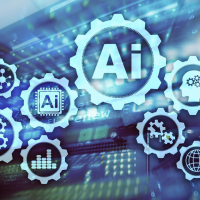In the rapidly evolving world of finance, automation technologies are transforming the banking industry. From enhancing customer service to streamlining back-office operations, these technologies promise increased efficiency, reduced costs, and improved accuracy. In this blog post, we will explore the key automation technologies shaping modern banking and how they help financial institutions stay competitive in a crowded marketplace.

The Evolution of Automation in Banking
Banking has always been at the forefront of adopting technological advancements. From the introduction of ATMs in the 1960s to online banking in the late 1990s, the industry has consistently leveraged technology to improve operational efficiency and enhance the customer experience. Today, automation technologies are leading the charge, offering unprecedented capabilities that were once thought impossible.
Key Automation Technologies in Modern Banking
1. Robotic Process Automation (RPA)
Robotic Process Automation (RPA) involves using software robots or “bots” to automate repetitive, rule-based tasks traditionally performed by human employees. These bots can log into applications, enter data, perform calculations, and even interact with customers.
Benefits:
- Cost Savings: By automating routine tasks, banks can significantly reduce labor costs.
- Improved Accuracy: RPA eliminates human error, ensuring tasks are completed flawlessly.
- Increased Efficiency: RPA can work 24/7 without breaks, drastically increasing productivity.
Applications:
- Account Opening: Automating the process of opening new accounts and verifying customer information.
- Loan Processing: Streamlining loan approval workflows by automating document verification and data entry.
- Compliance: Ensuring adherence to regulatory requirements by automating compliance checks and reporting.
2. Artificial Intelligence (AI) and Machine Learning (ML)
Artificial Intelligence (AI) and Machine Learning (ML) are revolutionizing the banking industry by enabling systems to learn from data and make intelligent decisions. These technologies can analyze vast amounts of data to identify patterns, predict outcomes, and provide personalized recommendations.
Benefits:
- Enhanced Customer Experience: AI-driven chatbots and virtual assistants provide instant, personalized support to customers.
- Fraud Detection: ML algorithms can detect unusual patterns in transactions, flagging potential fraud in real-time.
- Risk Management: AI models can assess credit risk more accurately, helping banks make informed lending decisions.
Applications:
- Chatbots: Providing instant support and answering customer queries through natural language processing (NLP).
- Credit Scoring: Analyzing customer data to predict creditworthiness and tailor loan offers.
- Investment Advisory: Offering personalized investment advice based on individual risk profiles and market trends.
3. Blockchain Technology
Blockchain is a distributed ledger technology that ensures secure, transparent, and tamper-proof transactions. While often associated with cryptocurrencies, its applications in banking extend far beyond digital currencies.
Benefits:
- Security: Blockchain’s decentralized nature and cryptographic security make it highly resistant to fraud and hacking.
- Transparency: All transactions are recorded on a public ledger, ensuring complete transparency.
- Efficiency: Blockchain can streamline processes like cross-border payments, reducing settlement times from days to minutes.
Applications:
- Cross-Border Payments: Enabling faster and more cost-effective international transactions.
- Smart Contracts: Automating contract execution without the need for intermediaries.
- KYC Compliance: Simplifying the Know Your Customer (KYC) process by securely storing and sharing customer information.
4. Optical Character Recognition (OCR)
Optical Character Recognition (OCR) technology converts different types of documents, such as scanned paper documents, PDFs, or images taken by a digital camera, into editable and searchable data.
Benefits:
- Time Savings: OCR reduces the time required to manually input data from physical documents.
- Increased Accuracy: Automated data extraction minimizes human error.
- Enhanced Data Management: Digitized documents can be easily stored, searched, and retrieved.
Applications:
- Document Management: Automating the processing of invoices, contracts, and other paperwork.
- Cheques Processing: Quickly and accurately digitizing cheque information for faster clearance.
- Identity Verification: Extracting data from identity documents to expedite customer onboarding processes.
5. Natural Language Processing (NLP)
Natural Language Processing (NLP) is a subset of AI that enables machines to understand and interpret human language. In banking, NLP is used to analyze customer interactions, extract meaningful insights, and automate communication.
Benefits:
- Improved Customer Interactions: NLP-powered chatbots and voice assistants offer more natural and engaging customer experiences.
- Data Insights: Analyzing customer feedback and social media interactions to gain valuable insights.
- Compliance Automation: Automating the extraction and analysis of regulatory documents and reports.
Applications:
- Customer Support: Enhancing chatbots with the ability to understand and respond to complex customer queries.
- Sentiment Analysis: Analyzing customer reviews and social media posts to gauge public sentiment.
- Regulatory Compliance: Automating the analysis of legal documents to ensure compliance with regulations.
The Future of Automation in Banking
The adoption of automation in banking is still in its early stages, with immense potential for future growth. As these technologies become more sophisticated and integrated, we can expect even greater efficiencies and innovations in the industry.
Trends to Watch:
- Hyper-Personalization: Leveraging AI and ML to deliver highly personalized banking experiences.
- Open Banking: Integrating third-party services through APIs to offer a wider range of financial products and services.
- Advanced Analytics: Utilizing big data and predictive analytics to drive strategic decision-making.
- RegTech: Developing advanced regulatory technology solutions to enhance compliance and reduce risk.
Conclusion
Automation technologies are reshaping the banking industry, offering unprecedented opportunities for efficiency and innovation. By leveraging RPA, AI, blockchain, OCR, and NLP, financial institutions can stay competitive, improve customer experiences, and drive down operational costs.
As the landscape continues to evolve, embracing these technologies will be crucial for banks looking to thrive in the modern era. If you’re interested in exploring how automation can transform your banking operations, don’t hesitate to reach out to industry experts or consult with technology providers specializing in these cutting-edge solutions.
By staying ahead of the curve and investing in automation, banks can not only boost efficiency but also set themselves up for long-term success in an increasingly digital world.

Founder Dinis Guarda
IntelligentHQ Your New Business Network.
IntelligentHQ is a Business network and an expert source for finance, capital markets and intelligence for thousands of global business professionals, startups, and companies.
We exist at the point of intersection between technology, social media, finance and innovation.
IntelligentHQ leverages innovation and scale of social digital technology, analytics, news, and distribution to create an unparalleled, full digital medium and social business networks spectrum.
IntelligentHQ is working hard, to become a trusted, and indispensable source of business news and analytics, within financial services and its associated supply chains and ecosystems










